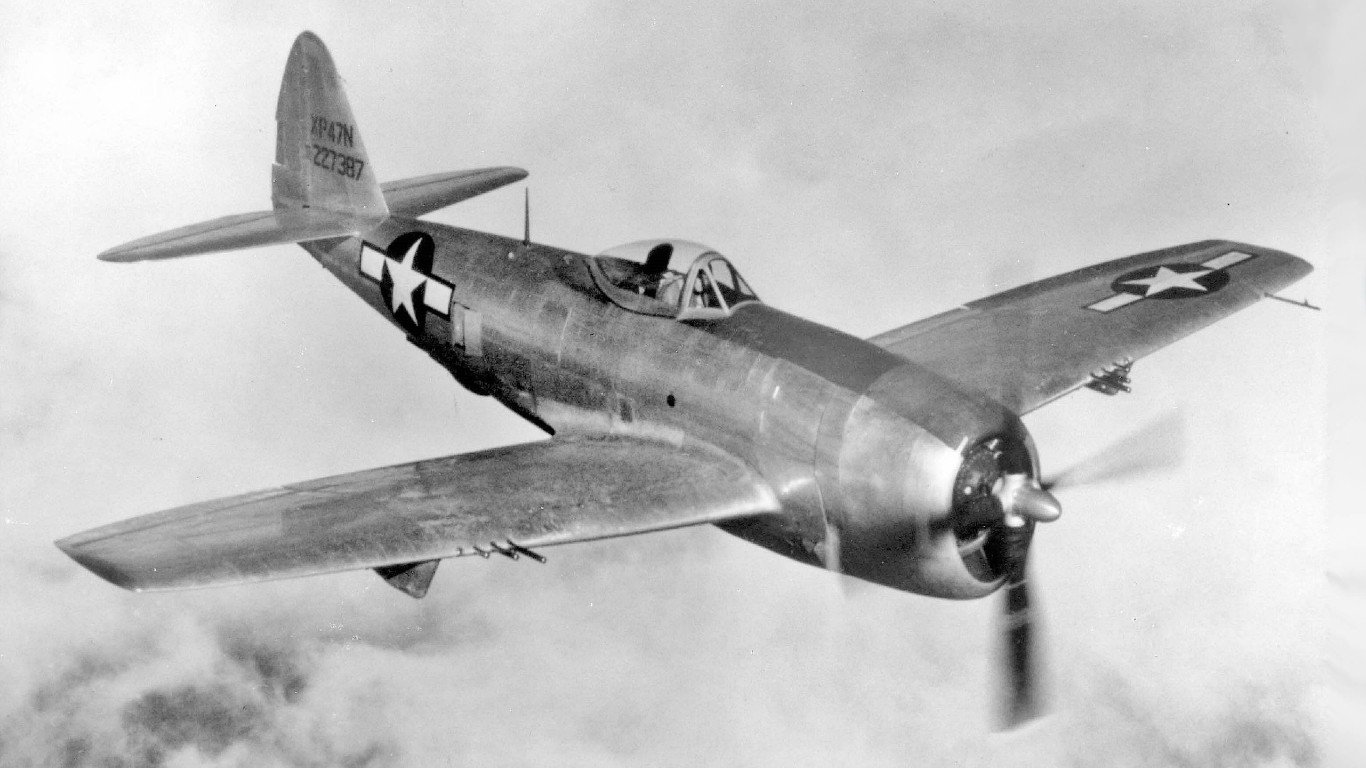

Since mankind first warred over territory, resources, or dogma, those responsible for outfitting their troops have sought to develop the fighting technology to give the strategic edge over the enemy, often regardless of how horrific the newest weapons can be. Consequently, military technology has been developed for millennia that can take as many lives as possible, often with awe-inspiring effect and terrifying efficiency. Many of the newest weapons rely on terror itself — the psychological effects inflicted on the enemy — to win battles. (also read: modern warfare’s 20 most lethal weapons.)
To identify history’s deadliest weapons, 24/7 Wall St. reviewed a report called “Quantification Related to Weapon Lethality,” originally issued in 1964 by the Historical Evaluation and Research Organization for the U.S. Army Combat Developments Command. It rates the lethal potential of various weapons on such quantifiable measures as number of potential targets per strike, relative effect, effective range, accuracy, reliability, and mobility. (Also see: the 50 most popular guns in world history.) It should be noted that this list is meant to be a sample of some of the deadliest weapons — there are, for example, other highly-deadly nuclear weapons besides those listed here.
Some weapons on the list also point to the rapid evolution of technology since the Industrial Revolution. The sword, for example, was used for thousands of years in numerous different forms and cultures, and still has a ceremonial place in military life. On the other hand, many of the weapons used in World War I were already obsolete by the start of World War II.
Click here to see history’s deadliest weapons
Many military advancements have come from scientific breakthroughs in other areas. For example, the airplane, initially conceived simply as a means of rapid transportation, was quickly adapted for use in warfare. It works the other way, too: Gunpowder was used in warfare as early as the 10th century in China — but it can also be used to blast tunnels or even to entertain us (in the form of fireworks). (Here are some examples of commercial products invented by the military.)
18. Arquebus
> Lethality index score: 10
The arquebus was an early firearm that appeared in 15th century Europe. It was slow to reload, inaccurate and so heavy that it had to be mounted on a pole to fire. Originally, it was used as a defensive weapon for protecting cities and other fortifications. There is a potent French spirit called Arquebuse de l’Hermitage, which legend has it was first formulated to treat those wounded by an arquebus.
[in-text-ad]
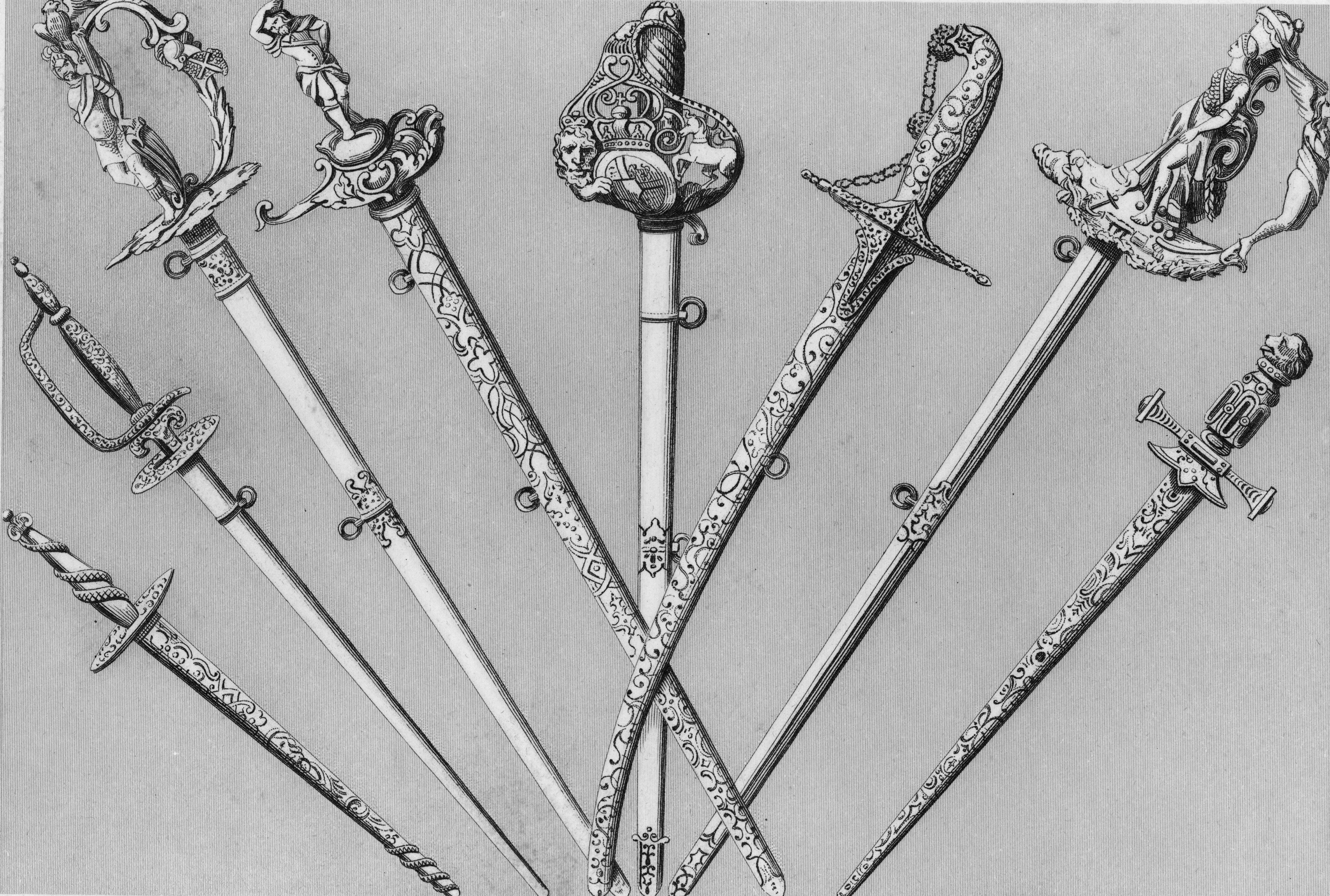
17. Sword
> Lethality index score: 20
The most ubiquitous and iconic pre-gunpowder weapons, swords have come in countless different forms and styles around the world. An evolution of daggers, early swords date back at least to around 3300 BC, at the beginning of the Bronze Age. They remained in military service long after the invention of firearms and are still widely used ceremonially.

16. Crossbow
> Lethality index score: 32
First seen in East Asia, crossbows applied many of the principals of bows while allowing users to harness more power and accuracy. They were easier to operate than conventional bows, so took considerably less training to be used effectively.
15. 16th-century cannon
> Lethality index score: 43
The rise of cannons changed warfare on land and sea. Fortifications were forced to adapt to siege from cannon fire and in turn arm themselves with these powerful weapons. Cannons in this time period were often difficult to maneuver and not very accurate. However, they did massive damage if they found their mark.
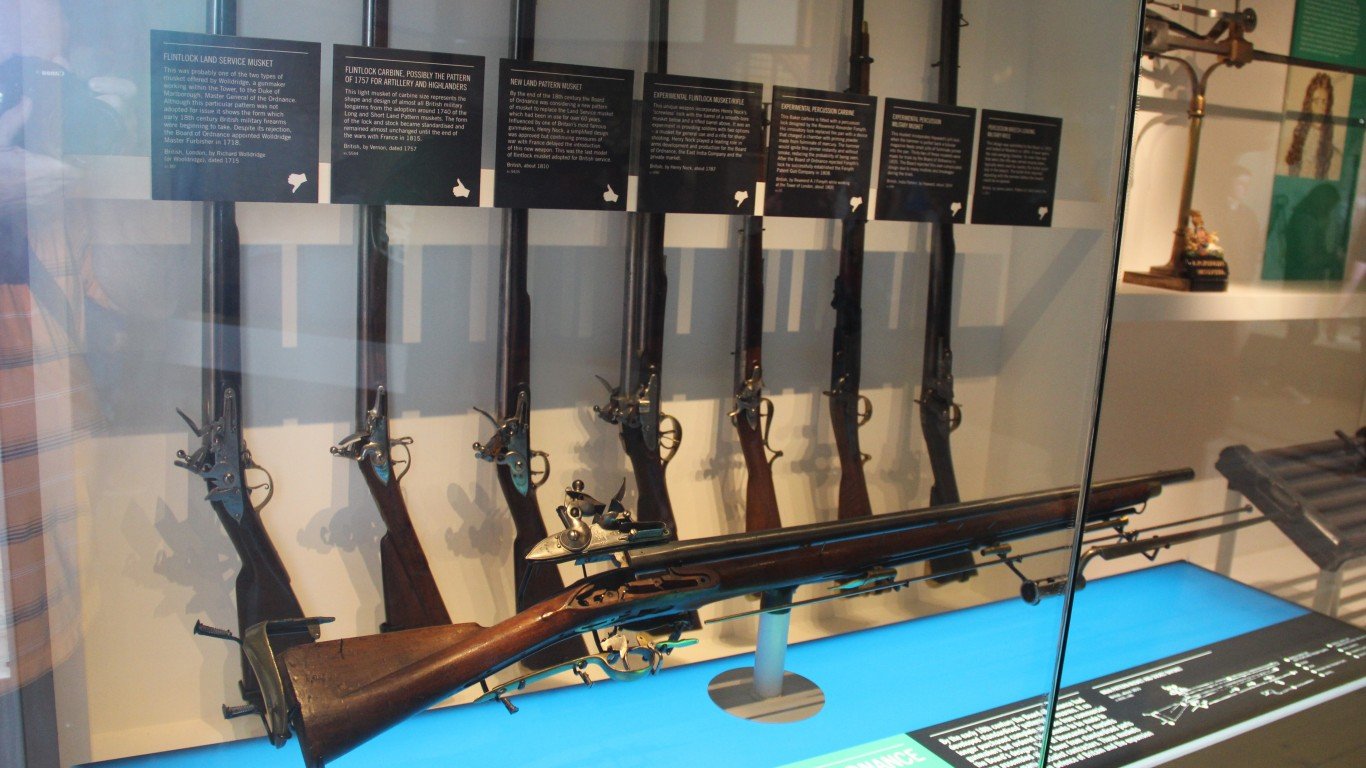
14. Flintlock musket
> Lethality index score: 47
Flintlocks are front-loading firearms that use flint to ignite gunpowder. It replaced guns with other firing mechanisms in the 17th century. While not the most accurate, flintlocks could be effective if fired in large numbers. The weapon stayed popular until midway through the 19th century.
[in-text-ad-2]
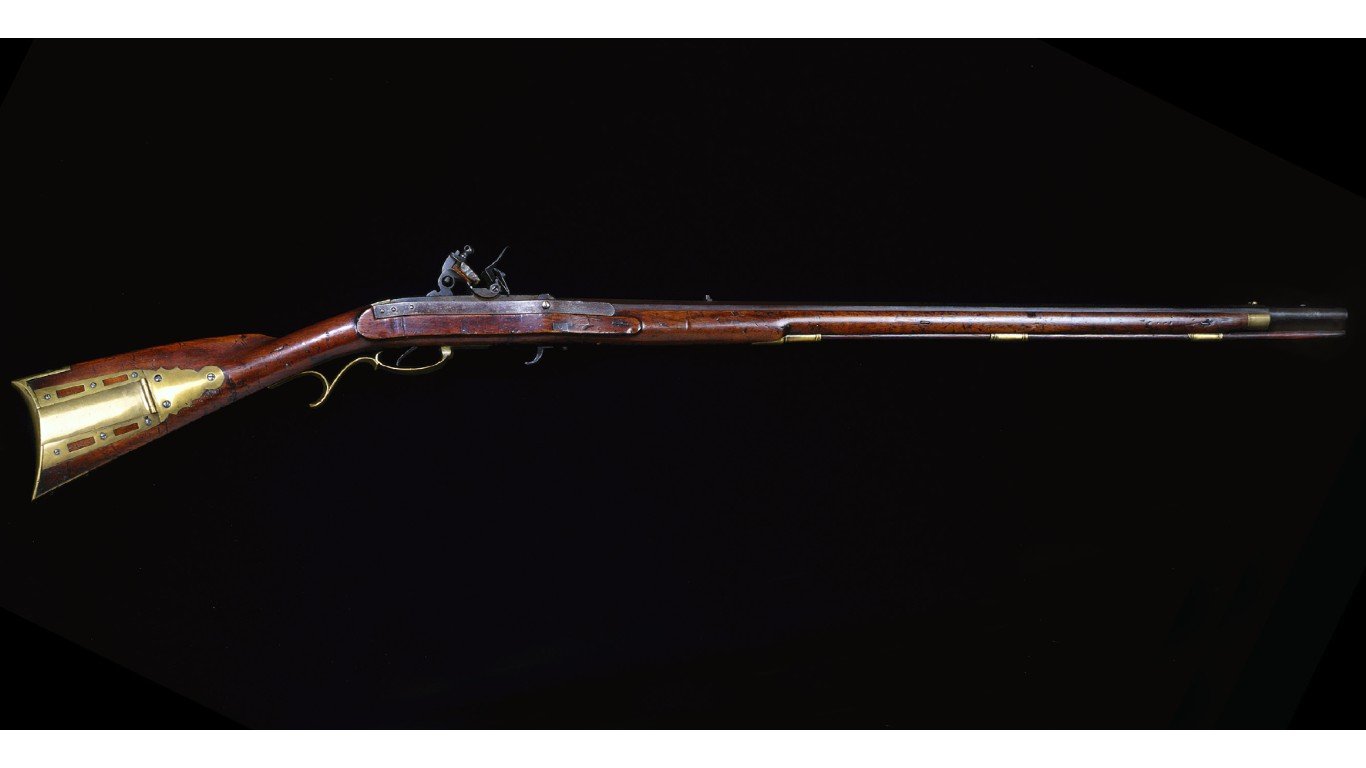
13. Breech-loading rifle
> Lethality index score: 229
Breech-loading firearms took off in the 19th century with the advancement of the precision machinery needed to make them effective. These firearms are loaded from the rear instead of the front of the gun. This method is much faster and safer and is used in almost all modern weapons. Combined with their rifling — the spiraling of the inside of the barrel for accuracy — breech-loading rifles were far more lethal and effective than muskets.
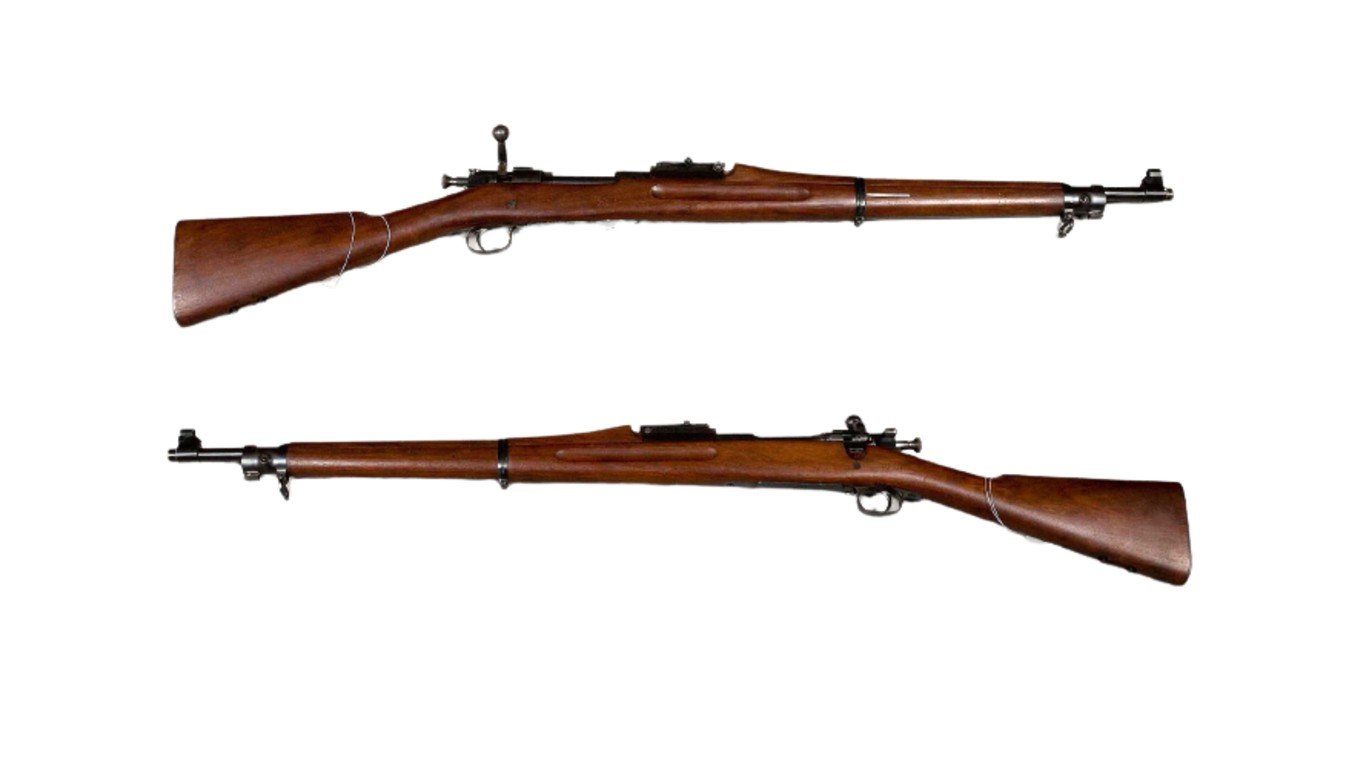
12. Springfield 1903 sniper rifle
> Lethality index score: 778
The Springfield 1903 is a five-round magazine bolt-action rifle. It was adopted by the U.S. military around the beginning of the 20th century and saw action during World War I and to some extent in World War II, though it was outdated at that point. It was a deadly accurate weapon that could be fired and reloaded rapidly.
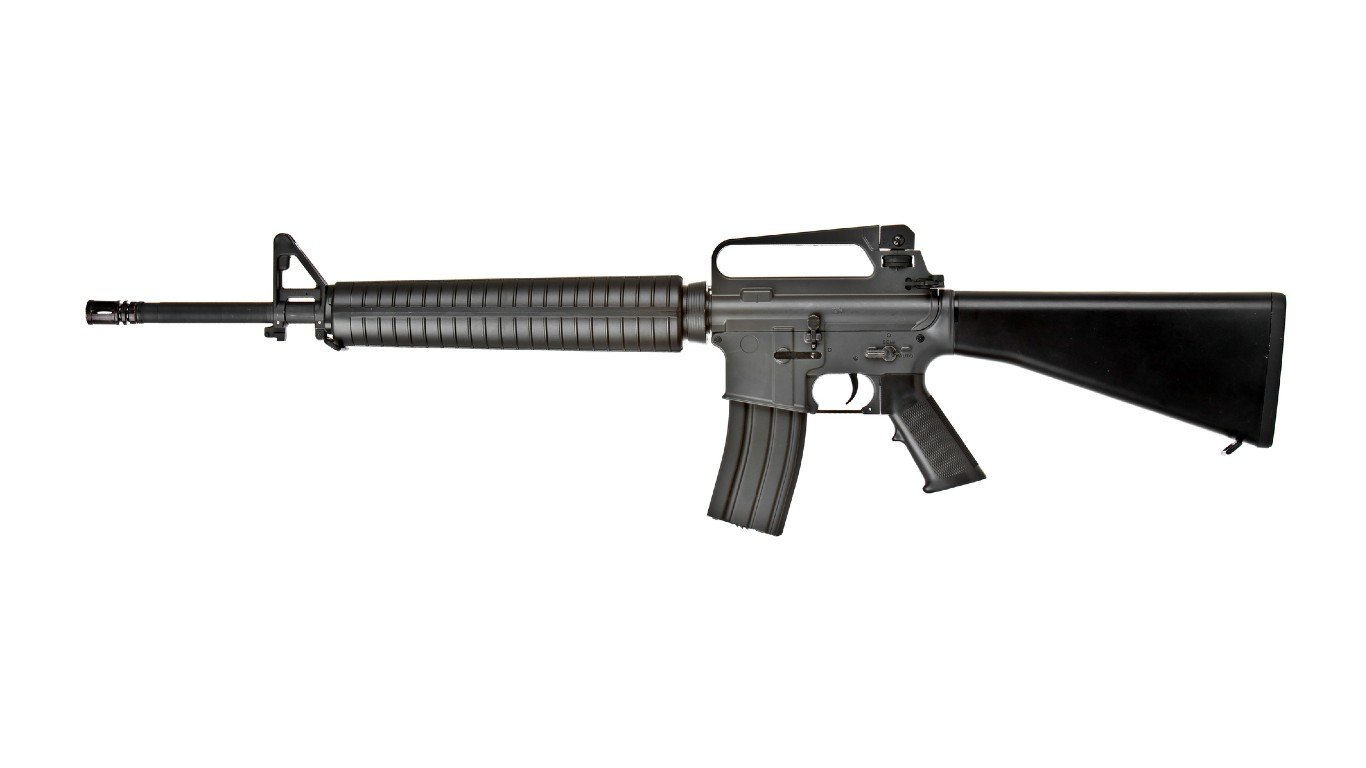
11. Assault rifle
> Lethality index score: 4,200
The first assault rifle was German-made and first saw widespread action during World War II. Assault rifles have detachable magazines for rapid reloading and several different rates of fire. AR’s are the most popular weapon for soldiers in the modern world and have improved considerably since their first conception. The Soviet AK-47 and American M16 are two of the most iconic assault rifles.
[in-text-ad]
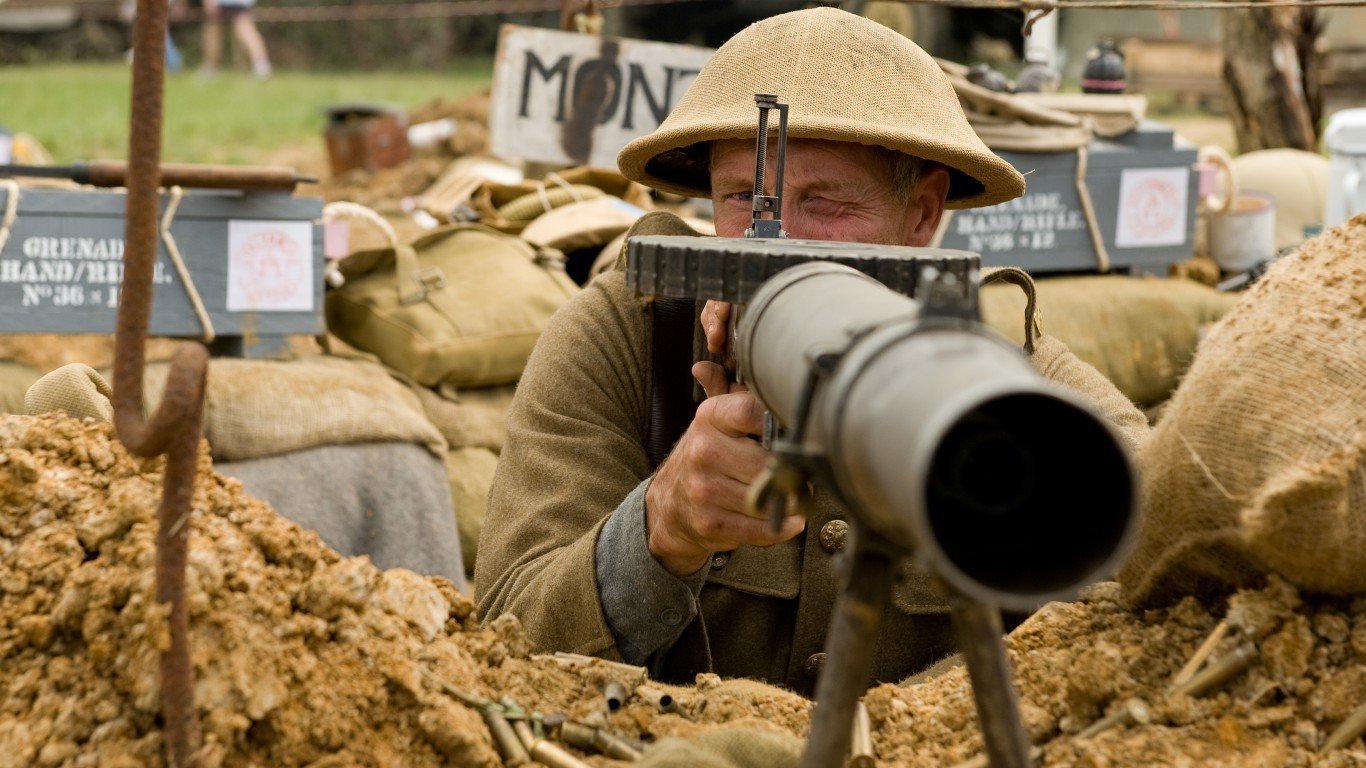
10. World War I machine gun
> Lethality index score: 12,730
Machine guns saw widespread use in World War I with devastating effect. At the time, machine guns were heavy, required several people to operate, and were prone to overheating. However, they unleashed carnage on the battlefield like the world had never seen before. In many ways, the weapons of the time were ahead of the tactics and commanders often foolishly sent soldiers and cavalry to charge in only to see them mowed down by these rapid-fire weapons.
9. World War I tank
> Lethality index score: 68,300
Tanks were originally invented to break the deadlock of World War I trench warfare. These heavily armored vehicles used treads instead of wheels and were armed with machine guns and naval cannons. Winston Churchill is regarded as one of the key figures who pushed for the development of tanks to turn the tide of the war.

8. World War I fighter-bomber
> Lethality index score: 229,200
World War I was the first time airplanes saw widespread action in combat. Fight-bombers were equipped with machine guns to take down enemy aircraft and a limited number of bombs to drop on targets. Bombing accuracy was poor at the time but a successful hit could devastate exposed enemy troops. Pilots suffered high numbers of casualties and flying was still very dangerous even when not in combat.
[in-text-ad-2]
7. French 75mm gun
> Lethality index score: 340,000
Commonly known as the French 75, the cannon was originally designed to fire anti-personnel shrapnel shells but was later adapted to also use high-explosive shells and toxic gas shells. It was first adopted by French forces in 1898 and was a huge advancement in technology. New aiming and loading technology meant the cannon could fire significantly faster than other similar weapons at the time. Further, the gun did not shift after firing so artillery crews were not forced to re-align it after every shot. It saw extensive usage in World War I and some in World War II.
6. V-2 ballistic missile
> Lethality index score: 861,000
Created by the Nazis to retaliate against Allied forces for bombing German cities during World War II, the V-2 was the world’s first long-range ballistic missile. Together with V-1s, its cruise missile predecessors, the V-2 rained down on British cities in 1944 and ’45. There was no way to defend against them and very little warning before they arrived. After the defeat of the Nazis, the Americans and Soviets jostled to acquire V-2 technology and the scientists that had invented the missiles.
[in-text-ad]
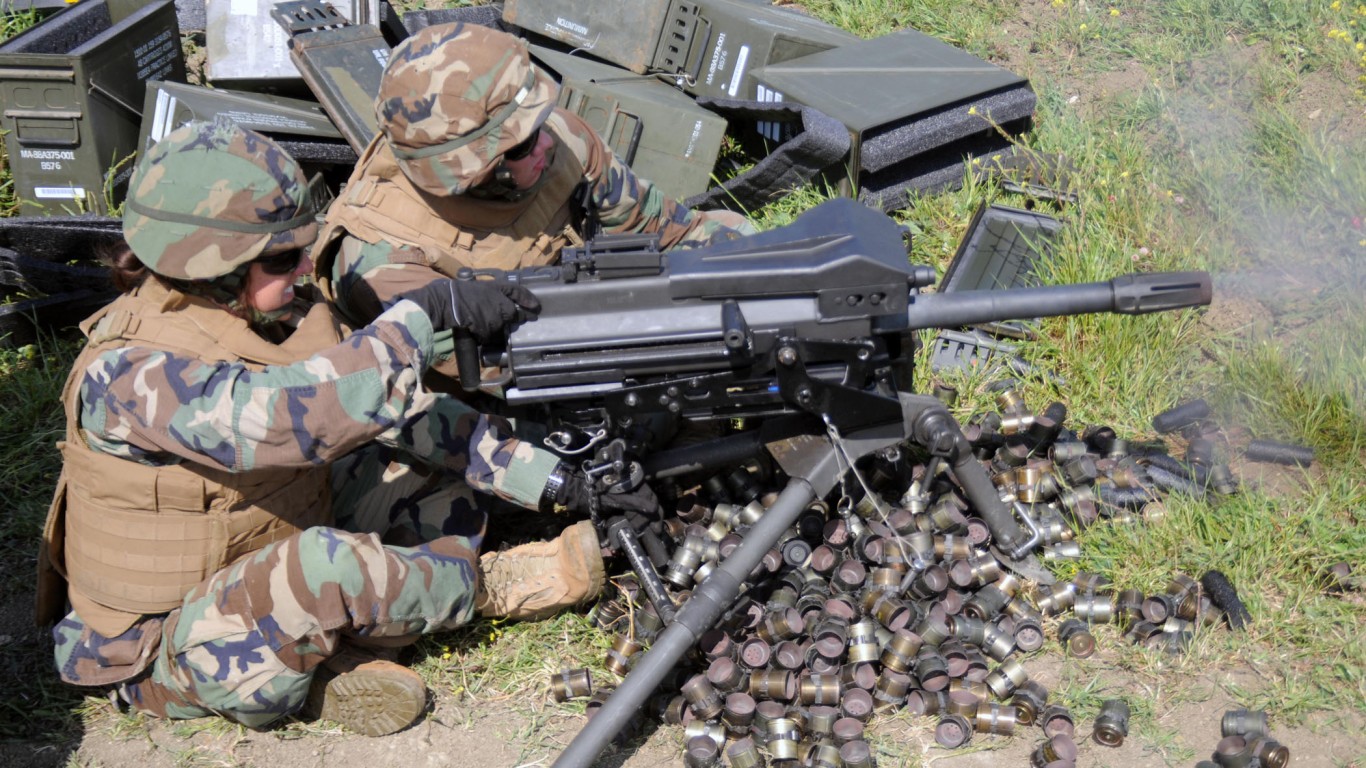
5. Automatic grenade launcher
> Lethality index score: 1,500,000
Automatic grenade launchers are usually mounted on vehicles or helicopters and able to rapidly fire grenades to devastating effect. The U.S. first introduced its M19 automatic grenade launcher in 1966 and used it throughout the Vietnam War. The weapons are used for direct fire on targets and for indirect fire like mortars. As technology has advanced some launchers now fire smart grenades that explode at certain points in the air.
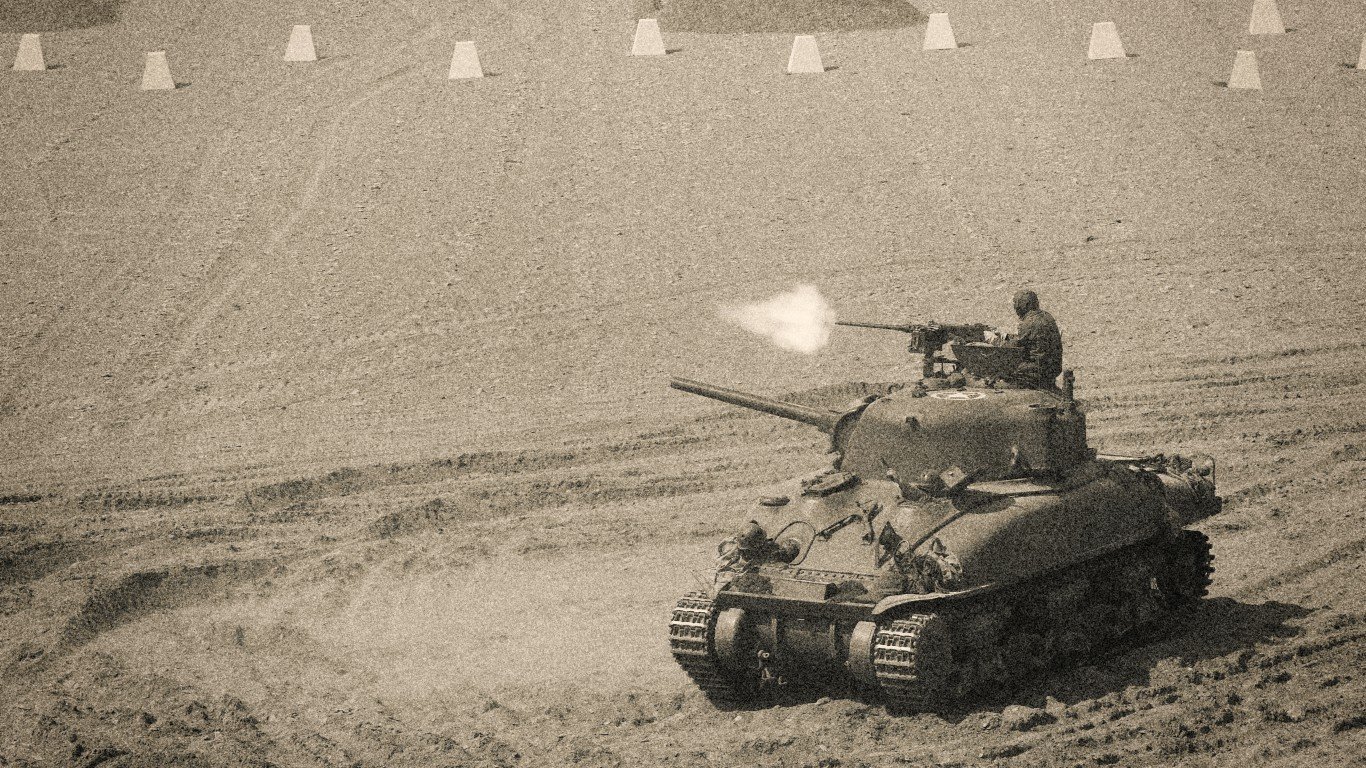
4. World War II tank (Sherman M4)
> Lethality index score: 2,203,000
Tank technology advanced rapidly during the interwar period. In World War II they were a critical part of combat. Nazi forces took massive amounts of territory with rapid tank advances known as blitzkriegs — literally “lightening wars.” Their ability to move quickly while being armored and carrying massive firepower shocked several armies into submission in the early days of the war. However, as tank technology advanced so did anti-tank weapons, proving that the vehicles were not invincible.

3. World War II fighter-bomber
> Lethality index score: 3,037,900
As with tanks, aircraft technology advanced significantly in the inter-war period. Most militaries adopted single-wing aircraft and air power became another staple of combat. Fighter-bombers were capable of shooting down other planes as well as devastating ground targets. Advances in weapons and flying technology meant that these planes had significantly larger range, more firepower, and more advanced tactical abilities.
[in-text-ad-2]
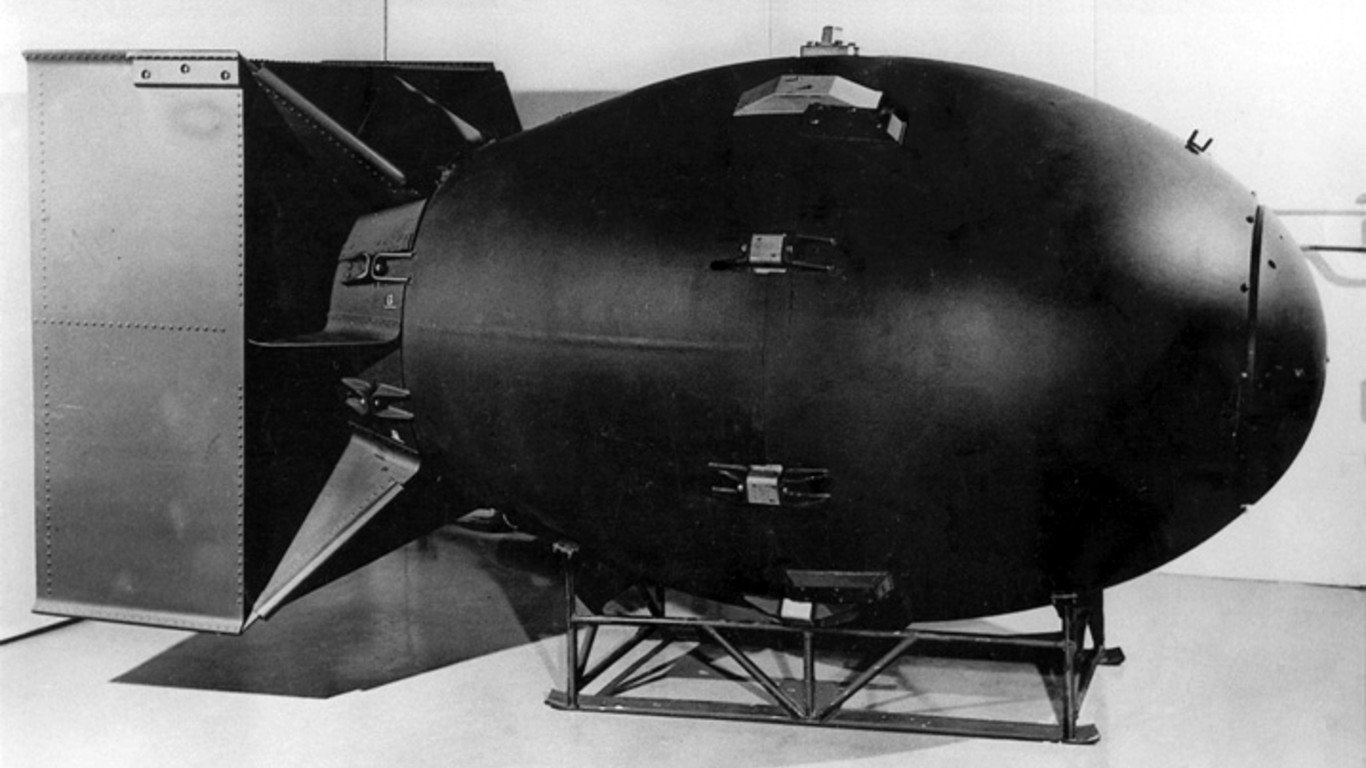
2. 20-kiloton nuclear bomb (“Fat Man”)
> Lethality index score: 48,550,000
The atomic bomb nicknamed “Fat Man” brought Armageddon to Nagasaki, Japan, at the end of World War II. More powerful than the bomb dropped on Hiroshima three days earlier, it destroyed Nagasaki in a split second, killing tens of thousands instantly and leaving many more seriously wounded by the blast and sickened by nuclear fallout. The explosion would lead to unconditional surrender by the Japanese. It remains only the second time a nuclear bomb has been used in war.
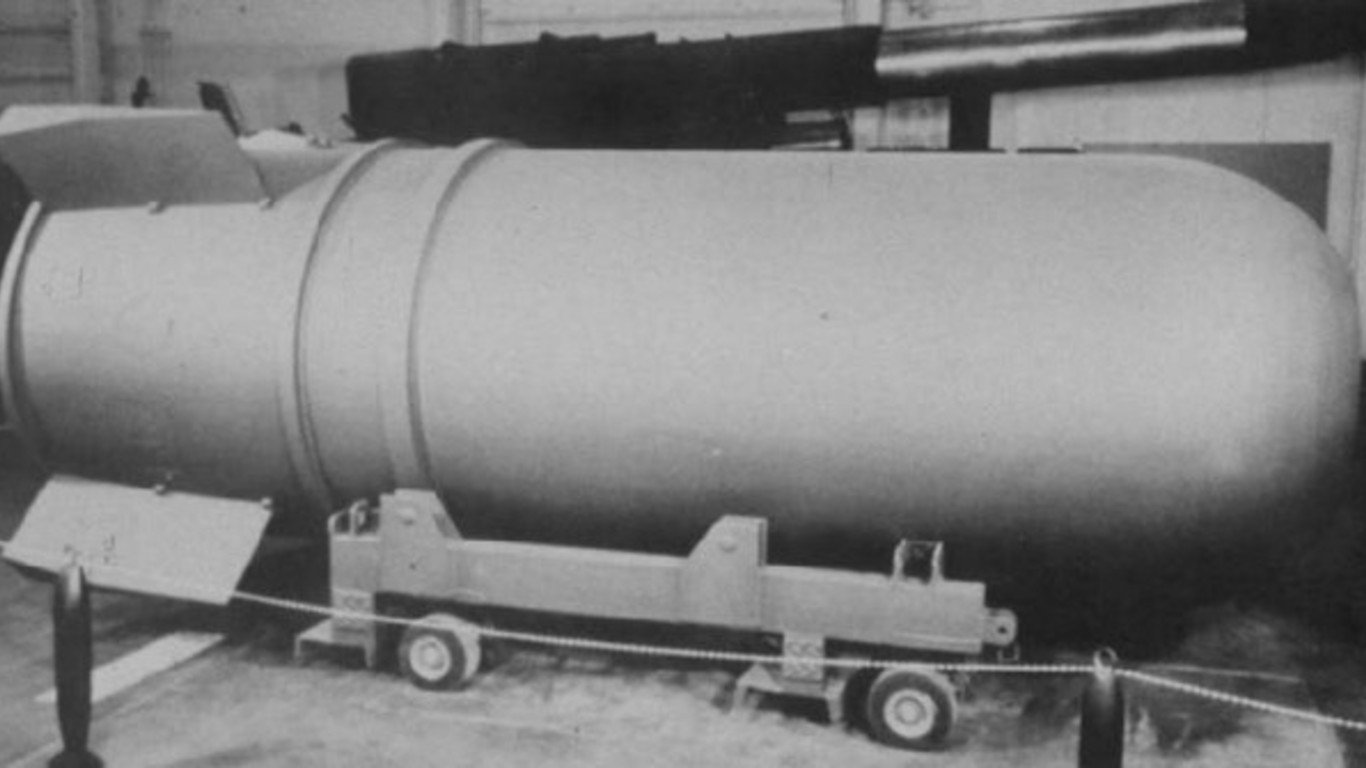
1. 25-megaton hydrogen bomb
> Lethality index score: 210,000,000,000
Created in the manic arms race of the Cold War, the B-41 hydrogen bomb is the deadliest weapon on this list. The bomb has never been used in warfare but is capable of destruction on a colossal scale. Its 25-megaton payload is equivalent to 25 million tons of TNT and significantly more powerful than Fat Man’s 20 kilotons of destructive power. The bomb entered US military service in 1961 and was retired in 1976.
Sponsored: Find a Qualified Financial Advisor
Finding a qualified financial advisor doesn’t have to be hard. SmartAsset’s free tool matches you with up to 3 fiduciary financial advisors in your area in 5 minutes. Each advisor has been vetted by SmartAsset and is held to a fiduciary standard to act in your best interests. If you’re ready to be matched with local advisors that can help you achieve your financial goals, get started now.
Thank you for reading! Have some feedback for us?
Contact the 24/7 Wall St. editorial team.
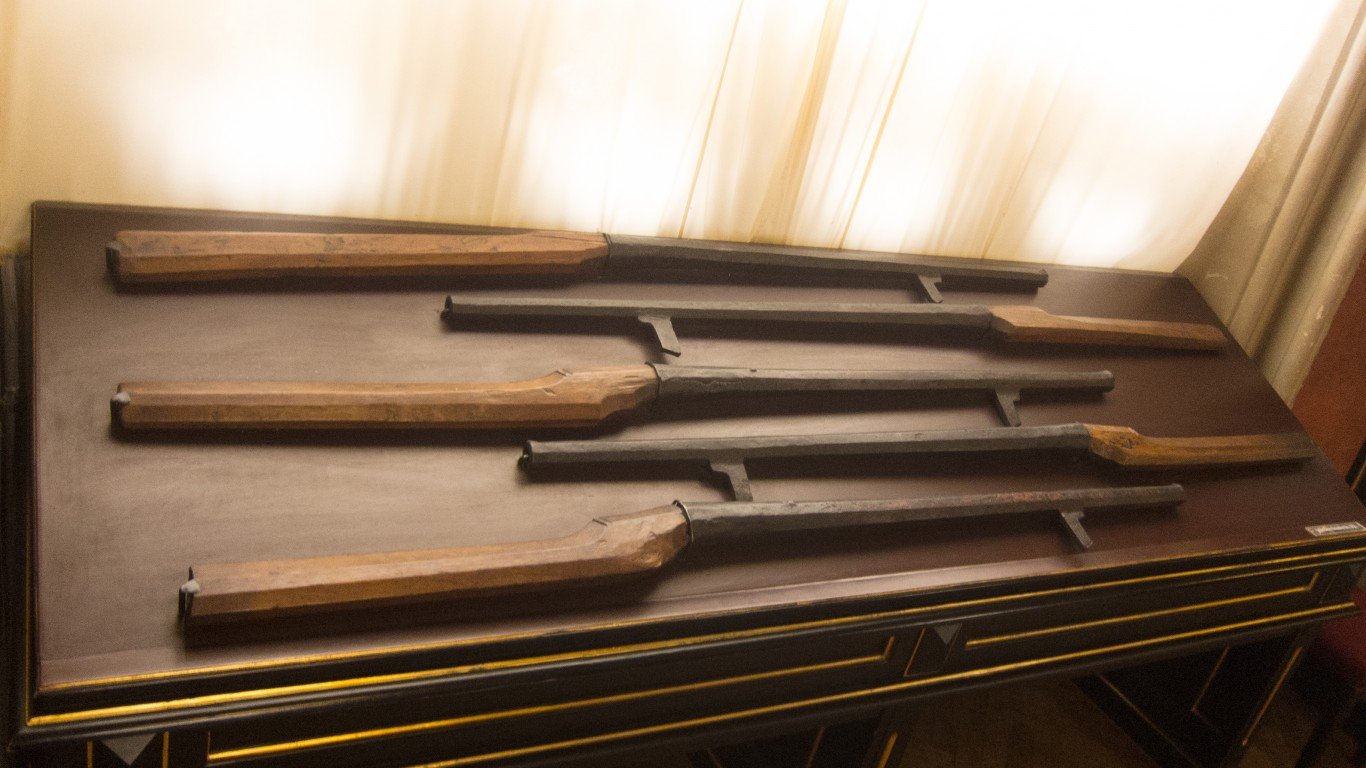
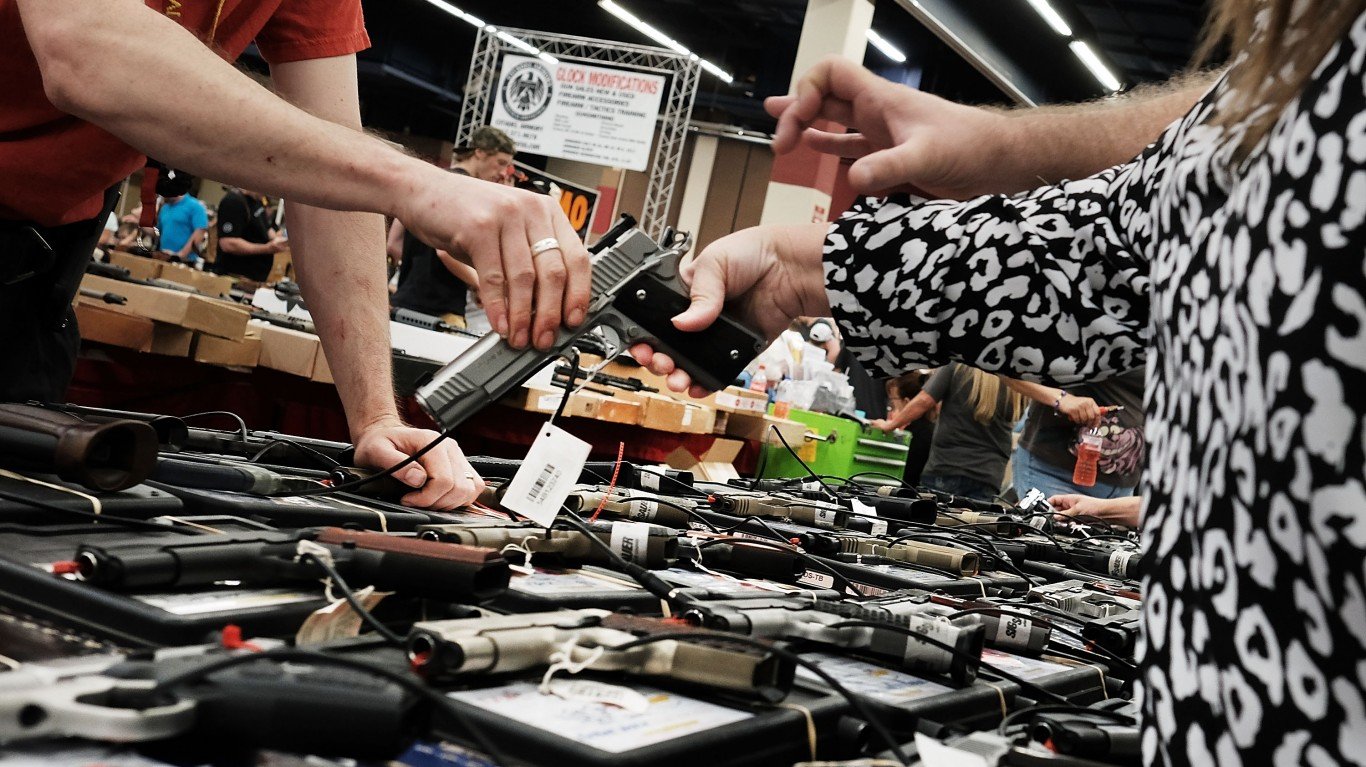 24/7 Wall St.
24/7 Wall St.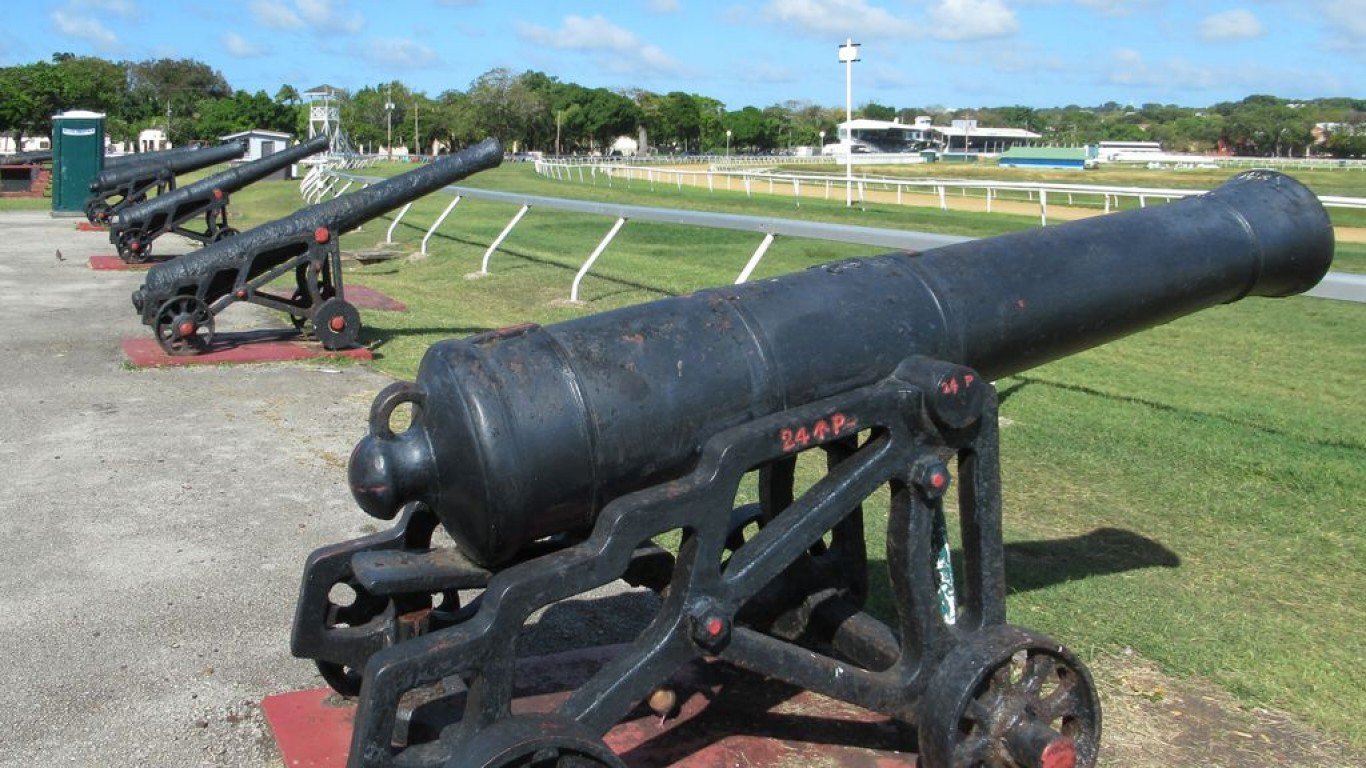
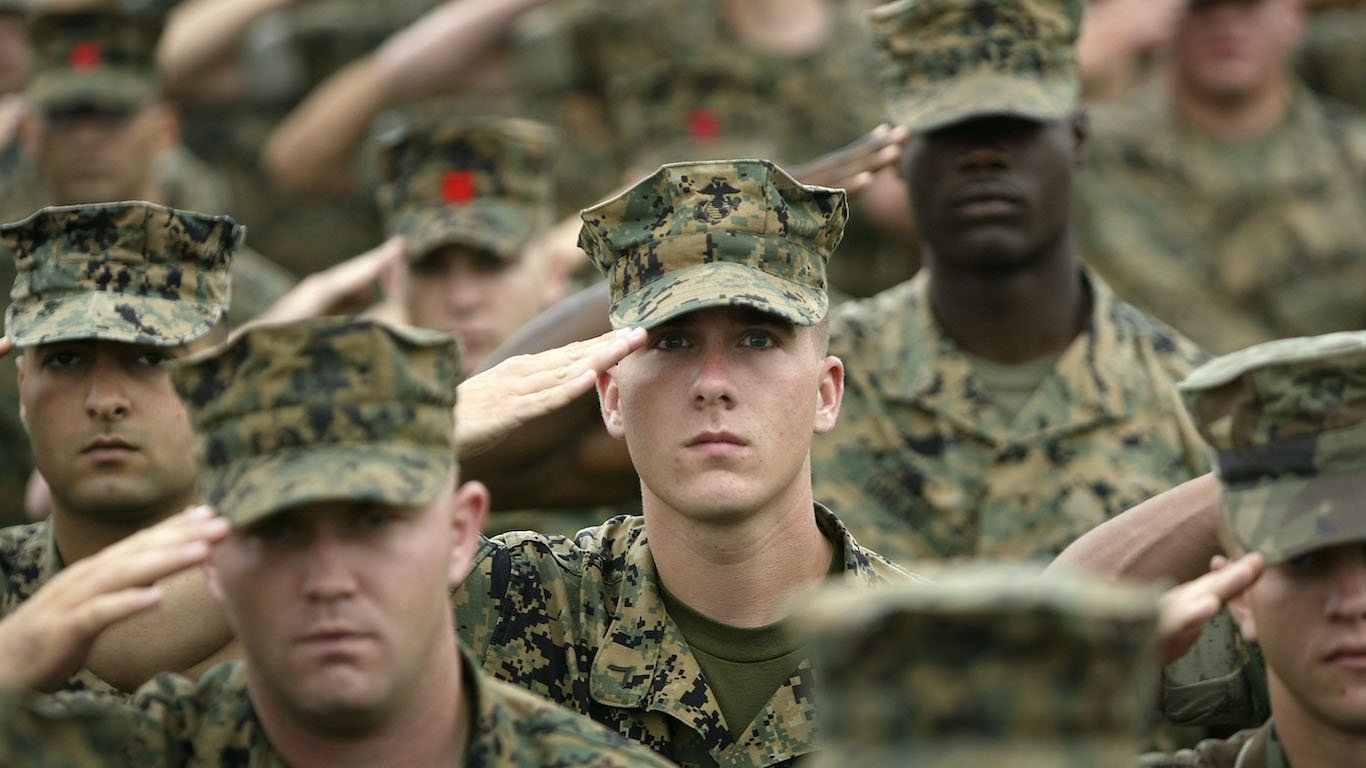 24/7 Wall St.
24/7 Wall St.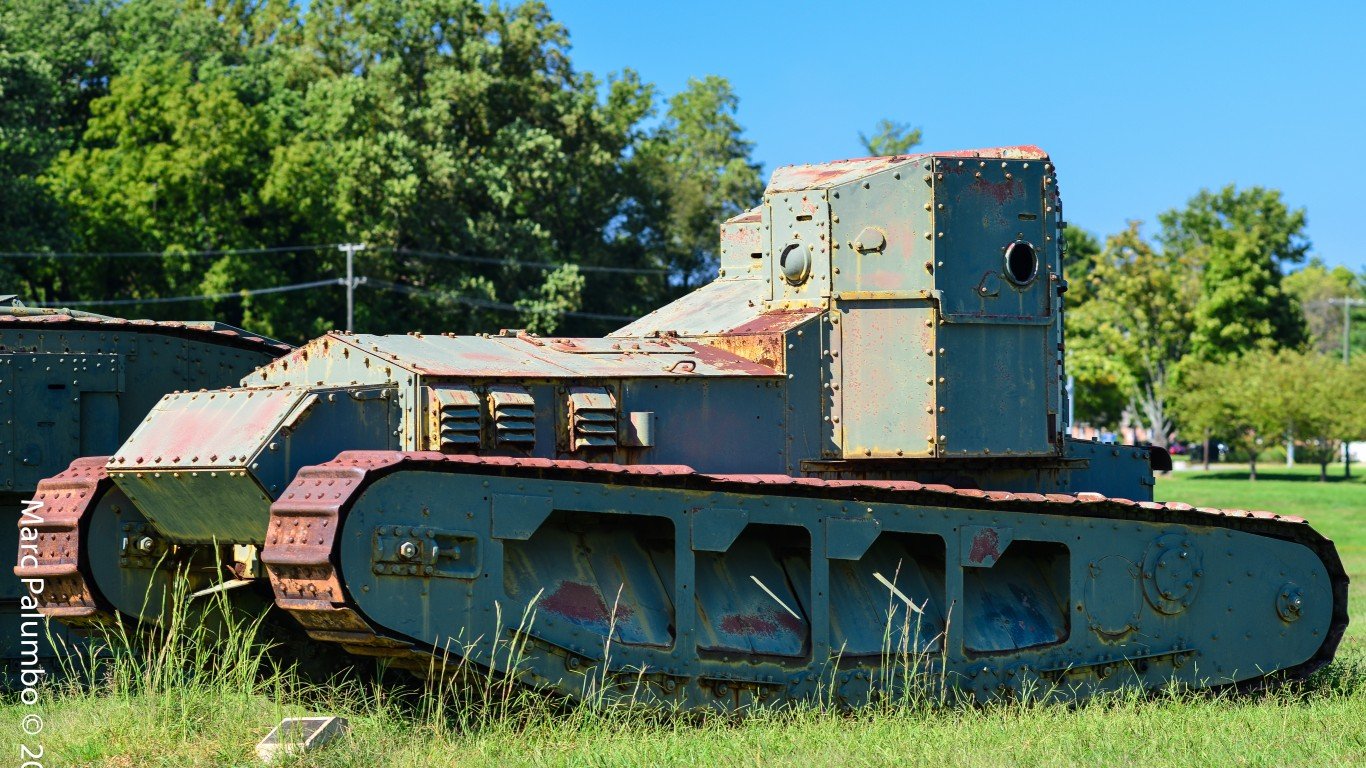

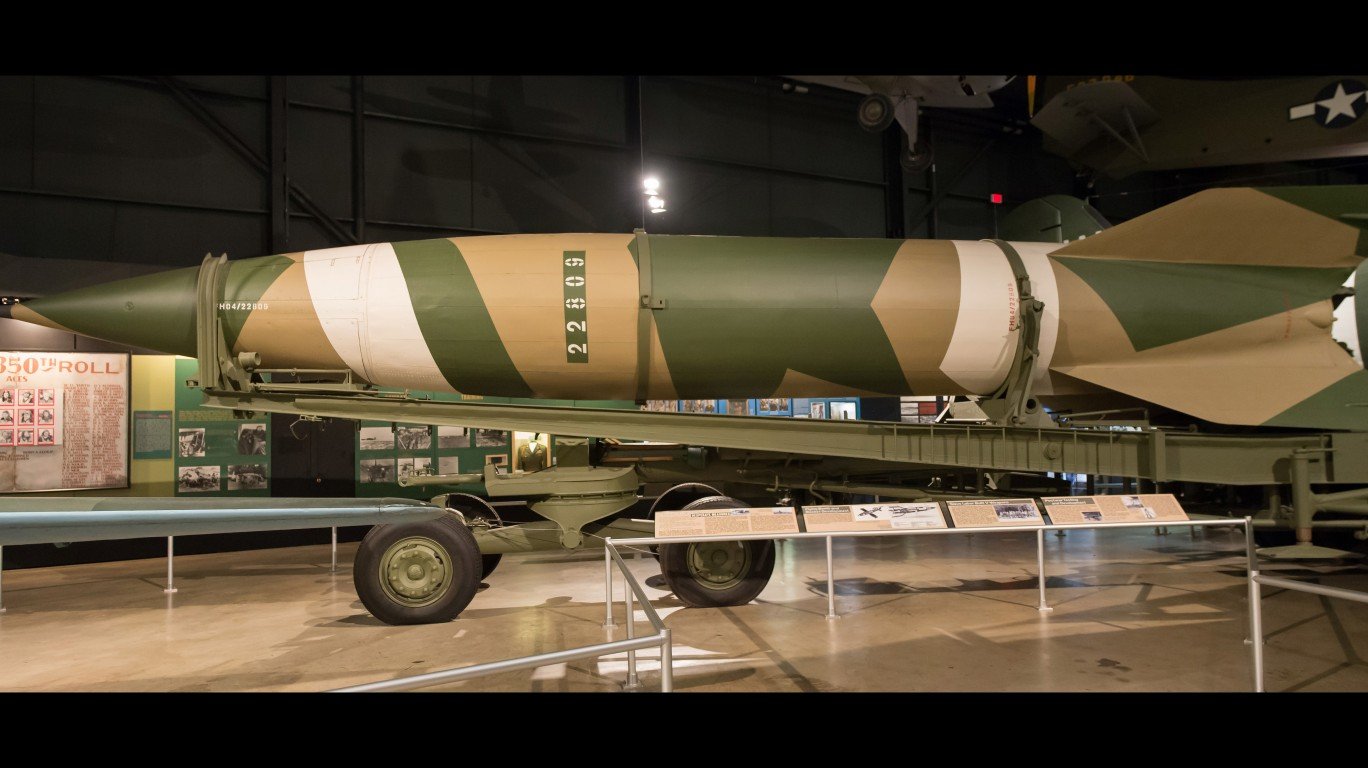
 24/7 Wall St.
24/7 Wall St.